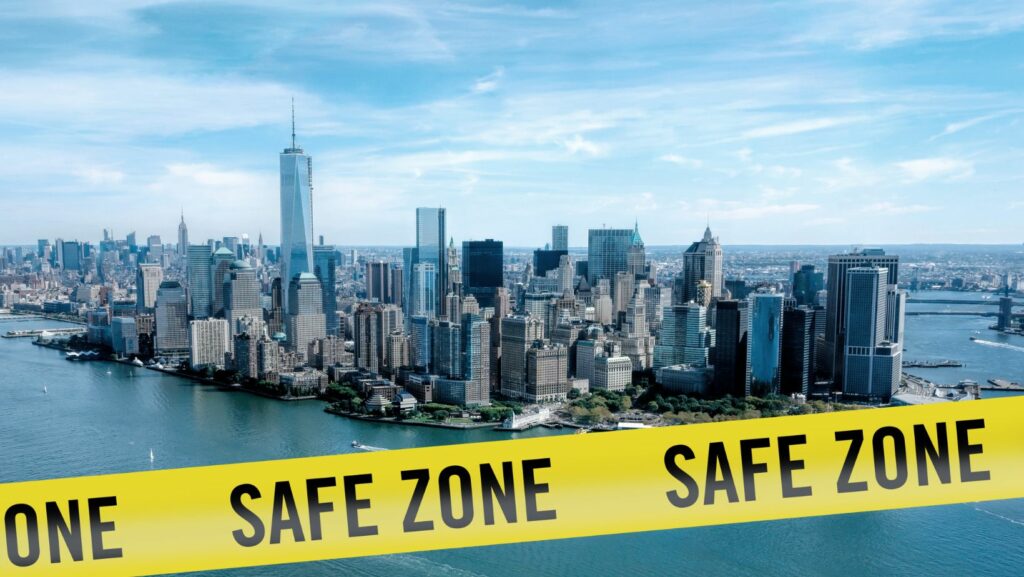Every year, cities around the globe face varying degrees of crime and violence, impacting the lives of millions. In 2024, the rankings of the world’s most dangerous cities reveal startling trends and shifts. These rankings, based on crime rates, safety measures, and socio-economic factors, provide a sobering look at urban areas where safety remains a pressing concern.
Key Criteria for Ranking the World’s Most Dangerous Cities in 2024
Several factors determine the ranking of the world’s most dangerous cities, emphasizing crime rates, political instability, and economic conditions.
Crime Rates and Their Impact

High crime rates directly influence city safety rankings. Violent crimes such as homicide, assault, and robbery are primary indicators. For example, cities with homicide rates exceeding 50 per 100,000 inhabitants rank higher on the danger scale. Public safety diminishes when crime rates surge, affecting residents’ quality of life and deterring investment.
Political Instability and Conflict Zones
Political instability often correlates with increased danger in urban areas. Cities in conflict zones or under authoritarian regimes face heightened risks. For instance, civil unrest, insurgencies, or oppressive government actions lead to law enforcement challenges. As a result, these areas experience disruptions in daily life and elevated threats to personal security.
Economic Factors Influencing Safety
Economic disparities also play a crucial role in city safety. High unemployment and poverty rates contribute to increased crime and violence. For example, cities with poverty rates above 30% often see higher instances of theft and violent crime.
Top 10 Most Dangerous Cities in 2024
In 2024, the global landscape sees several cities grappling with high danger levels. These cities span multiple continents, highlighting diverse and complex challenges.
Cities from Africa and Latin America
- Caracas, Venezuela
Caracas remains highly dangerous with a homicide rate over 50 per 100,000 inhabitants. Political instability and economic turmoil contribute to frequent violent crimes. - Cape Town, South Africa
Cape Town struggles with gang violence and high crime rates. Socio-economic disparities intensify these issues, making local safety a major concern. - San Pedro Sula, Honduras
San Pedro Sula sees rampant violence driven by gang activities and drug trafficking. Economic hardships exacerbate crime rates, impacting public safety. - Natal, Brazil
Natal faces high levels of violence due to drug-related activities and gang conflicts. Poverty and inequality further aggravate crime rates. - Acapulco, Mexico
Acapulco remains dangerous with organized crime syndicates causing widespread violence. Tourism declines as safety concerns increase.
- Kabul, Afghanistan
Kabul experiences ongoing violence from political instability and terrorist attacks. Frequent bombings and armed conflicts put residents at high risk. - Baghdad, Iraq
Baghdad remains volatile due to insurgent activities and sectarian violence. The security situation continues to challenge everyday life. - Karachi, Pakistan
Karachi deals with high crime rates including kidnappings and terrorist activities. Political unrest and economic instability worsen the situation. - Damascus, Syria
Damascus suffers from the consequences of prolonged civil war. Violence and unrest make it one of the most dangerous cities in the region. - Manila, Philippines
Manila grapples with crime issues driven by poverty and drug-related violence. Efforts to improve safety face significant hurdles.
Factors Behind the Rankings

Several critical factors contribute to deeming cities dangerous. These include crime rates, political instability, socio-economic disparities, and civil unrest.
High crime rates heavily influence city rankings. Data from local law enforcement and international organizations like the UNODC reveal areas with significant homicide rates, gang activities, and drug trafficking. For example, Caracas experiences extensive gang violence and drug-related crimes, increasing its danger level.
Political Instability

Political instability affects safety and security in urban areas. Cities like Kabul and Baghdad, facing ongoing conflicts and governance issues, rank high due to persistent violence and the government’s inability to maintain order. Failed governance often leads to increased crime and loss of public trust.
Socio-Economic Disparities
Economic disparities impact city safety. High unemployment rates, poverty, and lack of education contribute to higher crime rates. Cape Town struggles with substantial socio-economic inequalities, leading to increased violence and theft, making the city rank high in danger.
Civil Unrest
Civil unrest, protests, and government crackdowns elevate danger levels. Damascus, experiencing prolonged conflict and civil upheavals, sees frequent violent confrontations. This unrest exacerbates danger by destabilizing the societal order and increasing the likelihood of violent outbreaks.


